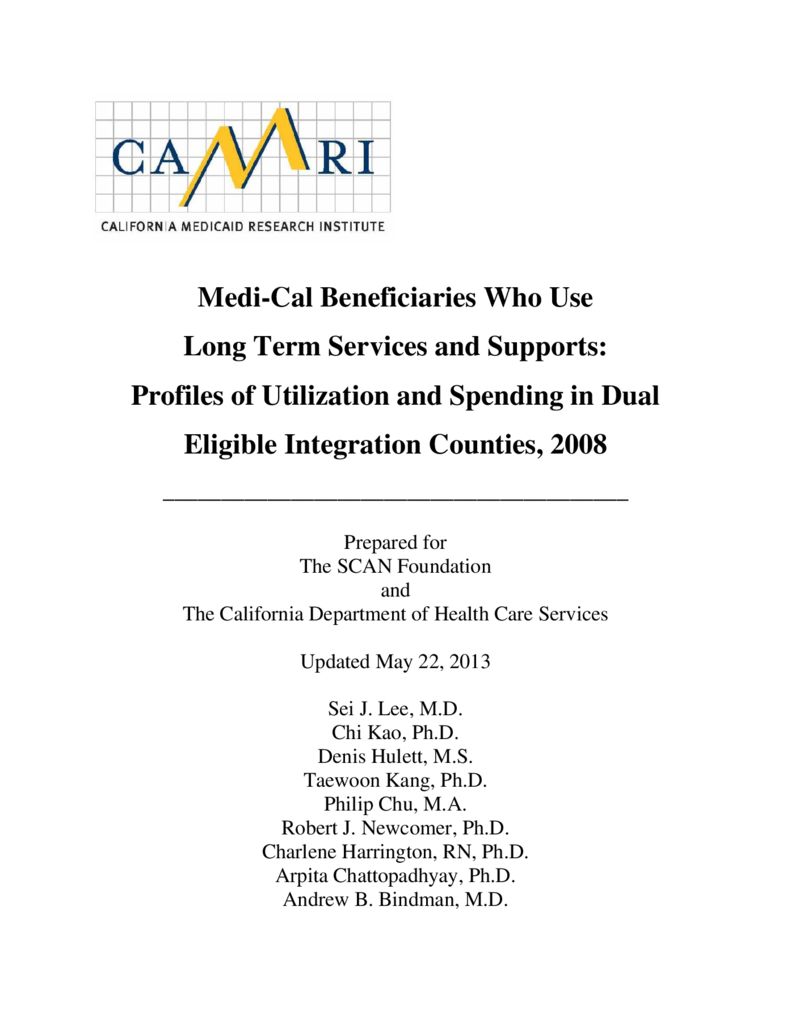CAMRI: Medi-Cal Beneficiaries Who Use Long Term Services and Supports (Updated)
summary
The California Medicaid Research Institute (CAMRI) developed an integrated and longitudinal database containing Medi-Cal and Medicare claims and assessment data of LTSS recipients in California in 2008. CAMRI’s integrated database provides a unique opportunity to look at characteristics and program spending across the entire care continuum for beneficiaries with LTSS needs within Medi-Cal and for dual eligibles across Medicare and Medi-Cal. This report focuses on LTSS use and spending in the eight duals demonstration counties.
Date Updated: 02/11/2013Background
California is one of fifteen states that received a $1 million design contract from the Centers for Medicare and Medicaid Services (CMS) to develop plans to better integrate the financing and services of Medi-Cal (California’s Medicaid program) and Medicare for those dually eligible for both programs (often referred to as dual eligibles or Medicare-Medicaid enrollees, MMEs). The state’s efforts resulted in the passage of the Coordinated Care Initiative (CCI), authorizing a three-year demonstration beginning in 2013.1 Eight counties were selected as the demonstration sites: Alameda, Los Angeles, Orange, Riverside, San Bernardino, San Diego, San Mateo and Santa Clara…
Download the publication for all visuals and complete references.
Continue Reading
This policy brief provides an introduction to The SCAN Foundation’s CLASS Technical Assistance Brief Series, which explores many of the critical issues to be considered for successfully implementing CLASS.
This policy brief describes the broad needs of individuals with disability and the wide range of supportive and environmental solutions that can allow for the most independent living possible. It suggests how findings on social and environmental supports for individuals with disability can inform implementation of CLASS.
This policy brief provides background on the historical development of benefit eligibility triggers in the private long-term care insurance market. Understanding how these triggers came into being can provide important information to those charged with implementing the CLASS Plan.


